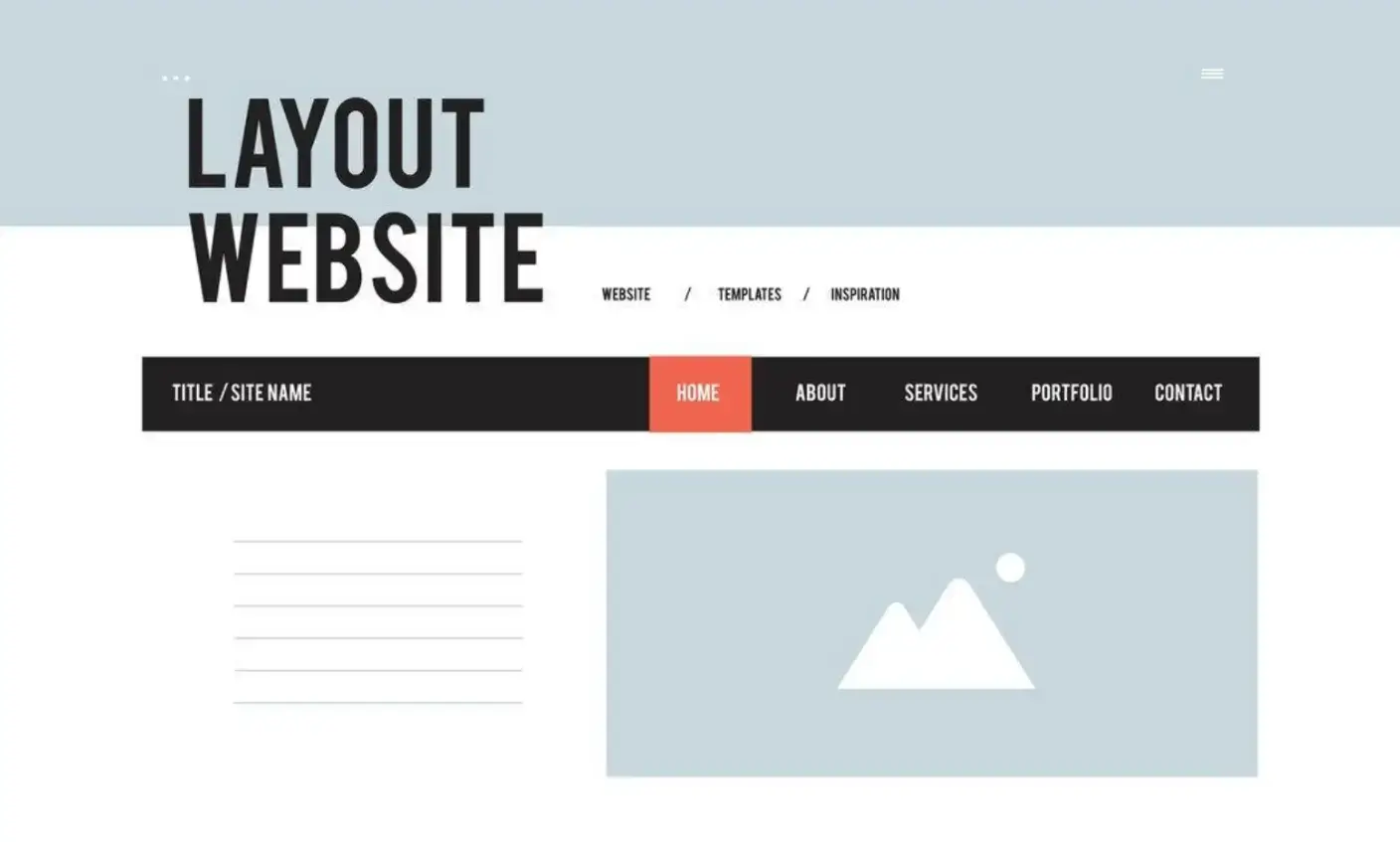You walk into a store, hoping to find what you need, but the moment you step inside, you're met with chaos: items are scattered everywhere, the aisles are cluttered, and there’s no clear sign of where to find anything.
It’s frustrating, right? You feel lost and irritated, eventually deciding to leave. Even if they had what you were looking for, the experience wasn’t worth your time.
Now, consider an e-commerce website in the same way. If users land on a site that's hard to navigate, slow to load, or lacks structure, they'll likely leave just as quickly, abandoning their potential purchase. It's not just about user experience (UX); the search engines are taking notes, too.
Google struggles to understand a poorly designed site, making it harder to rank. This leads to a double whammy: disgruntled customers and low search rankings.
When web design and SEO are properly integrated, a well-structured, user-friendly site draws in customers, boosts conversions, and improves search engine rankings.
At present, modern website designers also focus on web portal development, which plays a crucial role in modern web design by creating centralized, user-friendly platforms that offer personalized access to information, services, and tools. Web portals ensure better accessibility, security, and scalability for websites and efficiently cater to different user needs.
Article Shortcuts:
- Key Aspects of Web Design That Influence SEO
- SEO Best Practices in E-Commerce Web Design
- Common Mistakes to Avoid
- FAQ

Key Aspects of Web Design That Influence SEO
For your e-commerce website to reach its full potential, you need to nail a few key areas of web design.
From making sure users can use your site without problems to how search engines crawl and index it, these factors may make or break the wheel of your SEO success.
Let’s examine the critical design elements that can have the biggest impact on search engine rankings.
-
Mobile-friendly design
With over half of the Internet traffic coming from mobile devices, a responsive design is important to users and SEO alike.
If your website does not look great or does not work on mobile devices, users will leave, and the search engines - mostly Google - will take due notice.
As a matter of fact, Google has mobile-first indexing, which means it ranks the mobile version of your site first.
Taking care of your website on mobile is not only convenient but actually one of the most important ways to help your SEO and let customers have seamless experiences while interacting with your website.
The responsive design automatically adjusts your website's size, resolution, and even screen type to keep users happy and engage them.

-
Website speed and performance
Website speed directly affects user experience and SEO. If your site takes too long to load, visitors will bounce, and search engines will penalize you for this.
Google has confirmed that page load speed is a ranking factor; thus, faster websites have a better chance of ranking high in search results.
Optimize images, minimize code, and use a good hosting provider.
A fast, smoothly opening site guarantees customers will spend more time on it, and Google will rank you higher, which is important for your e-commerce digital marketing.
-
Site architecture and navigation
A clear and organized site structure helps search engines understand your content better and ensures that users can find what they need without frustration.
Make use of simple categories, logical hierarchy of your pages, and provide easy access for customers and search engines to get through.
Adding an intuitive menu, relevant internal links, and a solid URL structure will make your website SEO-friendly and user-friendly.
-
Visual design and content placement
How you position content and visually construct your site can be a major factor in SEO. A cluttered or distracting layout will only drive visitors away and lower your rank in search results.
Stick to a clean, organized design that makes key products and calls to action easy to find.
Thoughtful content placement, such as placing key information above the fold, provides clear paths for users and search engines to find what they seek.
When combined with personalized marketing, such as recommending relevant products at checkout, it further improves conversion rates and enhances user experience.
SEO Best Practices in E-Commerce Web Design
Some SEO best practices should be at the core of your design strategy to create a website that works for both users and search engines. These practices ensure a smooth, efficient visitor experience while boosting your site's rankings.
Focusing on key elements like user-friendly navigation, clear checkout processes, and accessibility can improve your e-commerce conversion rate optimization and make your website inviting and search engine-friendly.
-
Easy-to-use checkout process
A complicated checkout process is a major reason for cart abandonment. A streamlined, simple checkout experience can greatly increase the conversion of your visitors into paying customers.
Keep the process as brief as possible, reduce the number of steps, and use guest checkouts if possible.
Also, it offers different payment options by enabling PayPal, Apple Pay, or any other preferential method. This enhancement raises conversion rates and sends strong signals to the search engines that your website is friendly and has good usability, leading to better SEO performance.

-
User-friendly navigation menus
The navigation menu of your website is somewhat like a map that directs users in their purchase journey.
An effective, intuitive menu helps site visitors locate products and information without hassle. Do not overload the menu with a lot of categories. Ensure they look simple, readable, and are well-organized.
For instance, you can place products in categories like type, brand, or price range.
Simple and clean navigation lets customers find what they need quickly, enhancing their experience and increasing your chances of ranking higher in search engines.
-
Breadcrumb navigation
Breadcrumbs are small yet powerful features that improve UX and SEO. They let users know exactly where on your website they are and allow them to easily return to any previous page.
For instance, a product page can display breadcrumbs: Home > Categories > Product Type > Product. It provides search engines with a much better idea of how your site is laid out and may raise your site's visibility in search results.
-
Accessibility and inclusivity
Accessible design simply means ensuring your website is usable by all your visitors, including those with disabilities. That would include adding alt text to images, having good color contrast, and your site being keyboard-navigable.
Moreover, search engines like Google prioritize accessible sites, meaning that a well-designed, inclusive site can lead to higher rankings and better e-commerce conversion rate optimization.
-
Layout consistency
Consistency is important for usability and SEO. A consistent layout throughout all pages makes your website easier to use and looks polished and professional.
Make sure fonts, buttons, and colors are consistent throughout the site. This will create a feeling of familiarity, making users feel more comfortable with and confident in their purchases. Also, a well-organized layout will allow search engines to crawl your site more smoothly, helping the rankings.

-
Search bar placement and functionality
A working search box is one of the first resources that can be used to improve user experience.
It must be visible, usually at the top right or center, so that users can find it in less than two seconds if they are looking for something specific.
Search bars should also be easy to use, with suggestions auto-completed and filters that narrow down the search results.
A good search box will increase the possibility of finding what users want, thus increasing conversion rates and SEO and making the site more accessible.
Common Mistakes to Avoid
Even with the best intentions, e-commerce websites can stumble into pitfalls that hurt their rankings, frustrate users, and impact conversions.
Understanding these common mistakes can save you time, money, and countless headaches.
From neglecting the technical aspects of SEO to overlooking regular maintenance, these missteps can spiral out of control and hinder your digital marketing for e-commerce success.
Let's take a look at how to avoid these and keep your site running at peak performance.
-
Neglecting technical SEO
Neglecting technical SEO means that your website can get seriously impacted in terms of performance and visibility.
Broken links, images without compression, missing metadata, and problems with loading - all these irritate users and make search engines struggle while crawling and indexing your site.
Ensure URLs are clean and descriptive, compress images to increase load speed, and periodically audit to ensure there are no 404 pages or server timeouts.
Equally important is ensuring that the mobile website can perform all the functionalities of the desktop website.
Considering such technical details will smooth the user experience and encourage search engines to rank your site higher.

-
Ignoring regular maintenance
Think of a website as being like an automobile; it requires periodic tune-ups to run right.
Poor maintenance can lead to outdated content, broken features, or even security gaps. For instance, a product you are not selling but that is still listed could confuse customers and clutter your site.
On the other side of the equation, think of how out-of-date plugins may slow your website speed or open it up to other cybersecurity threats.
Set up a regular schedule for updating, from month-to-month checks for broken links to updating your content to keep it relevant to updating your security software.
That will help build trust among users, informing the search engines your website is active and viable.
FAQ
1. How does web design impact SEO for e-commerce websites?
A well-designed e-commerce website improves user experience, site speed, mobile-friendliness, and navigation, all of which influence search engine rankings. A clean structure helps search engines crawl and index pages efficiently, leading to better visibility in search results.
2. Why is mobile-friendly design important for e-commerce SEO?
Google prioritizes mobile-first indexing, ranking mobile-friendly sites higher. A responsive design ensures a seamless shopping experience for mobile users, reducing bounce rates and improving conversions.
3. How does website speed affect SEO and user experience?
A slow-loading website leads to higher bounce rates, reducing dwell time and signaling to search engines that users are dissatisfied. Optimizing images, minimizing code, and using a fast hosting provider can significantly boost load times and improve rankings.
Using a reliable photo editor to compress and resize images without compromising quality is a simple yet powerful way to enhance performance.
4. What role does site navigation play in SEO and conversions?
Intuitive navigation helps users find products quickly, reducing frustration and increasing time spent on the site. Search engines also favor well-structured websites with logical internal linking, improving indexing and ranking potential.
5. How does breadcrumb navigation improve e-commerce SEO?
Breadcrumbs enhance the user experience by showing the site's hierarchy and making navigation easier. They also help search engines understand site structure, improving crawlability and search visibility.
6. Why is an easy-to-use checkout process essential for SEO?
A complex checkout process increases cart abandonment rates, which negatively impacts conversions. A streamlined checkout with fewer steps and multiple payment options enhances user experience and improves trust signals for search engines.
7. What are common SEO mistakes in e-commerce web design?
Neglecting technical SEO, slow website performance, broken links, poor mobile optimization, and missing metadata are common mistakes. Regular site audits and updates help avoid these pitfalls.
8. How can accessibility and inclusivity affect SEO?
Accessible websites cater to a broader audience, including users with disabilities. Features like alt text for images, proper color contrast, and keyboard navigation improve usability, which search engines reward with better rankings.
9. Why is consistency in web design important for SEO?
A consistent layout, font usage, and branding across all pages create a cohesive shopping experience, which builds trust with users and helps search engines better understand content structure.
10. How can a search bar improve user experience and SEO?
A visible and functional search bar allows users to find products quickly, reducing bounce rates. Features like auto-suggestions and filters enhance usability, boosting engagement and search engine rankings.
Building a Strong Foundation for E-Commerce Success
Your e-commerce website is a living, breathing extension of your business, not merely a place to sell.
Once your site is fast, easy to use, mobile-friendly, and accessible to all, it will be a space attracting people in and keeping them coming back for more.
Combine it with smart digital marketing, and it is no longer about creating a website; it is about creating an experience that speaks to customers, nurtures their trust, and keeps your business ahead of the competitive curve. In a crowded online world, that's what makes all the difference.
Author Bio
Mushegh Hakobjanyan is the founder and CEO of Andava Digital, with 10+ years of experience in digital marketing and a focus on SEO and organic channels that drive traffic. I graduated with a degree in management of information systems, am a game theory enthusiast, and am a management 3.0 follower.


